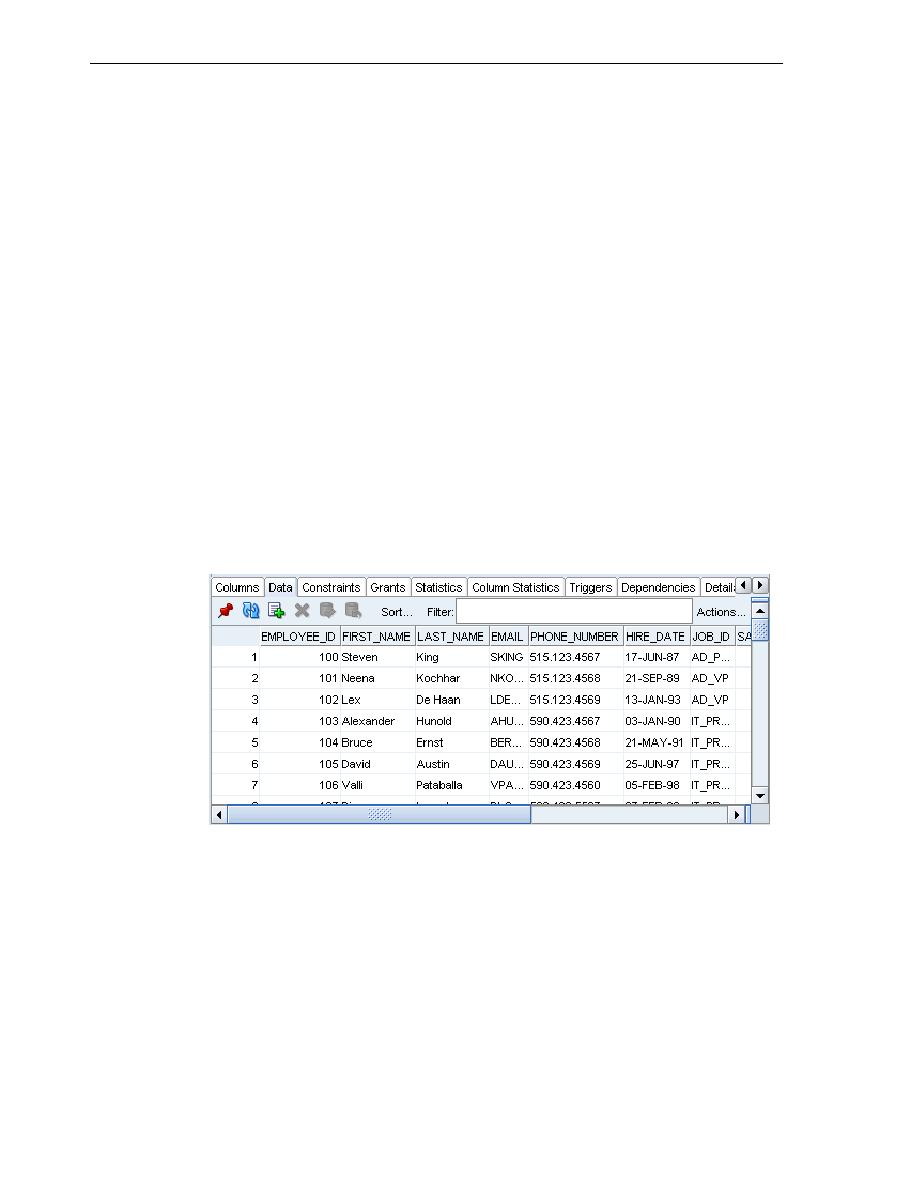
Retrieving Data with Queries
Retrieving Data with Queries
2-6 Oracle Database 2 Day Developer's Guide
Statistics
describes the properties of the data in the table, such as number of
records, the number of blocks in memory used by the table, average row
length, and so on.
Column Statistics
lists the number of distinct entries for each column, the low
and high values, and so on.
Triggers
lists the triggers associated with the table together with the type of
trigger, the triggering event, and so on.
Dependencies
lists all the objects that are dependent on this table, such as
triggers and views.
Details
lists other details of the table, such as creation date, owner (
hr
), name,
partitioning information, and so on.
Indexes
lists the indexes that are defined on the table columns, together with
their status, type, and so on.
SQL
summarizes the preceding information in the definition of the table
employees
; it includes column definition, indexes, and so on.
To view data in a table:
On the right-hand side of the Oracle SQL Developer window, click the Data tab.
You will see a listing of all records of this table. Each column of a table has an
associated data type that defines it as character data, an integer, a floating-point
number, a date, or time information. To see all properties of the column, move the
horizontal scroll bar to the right.
Retrieving Data with Queries
A query is an operation that retrieves data from one or more tables or views. A
top-level
SELECT
statement returns results of a query, and a query nested within
another SQL statement is called a subquery.
This section introduces some types of queries and subqueries.
See Also:
Oracle Database SQL Language Reference
